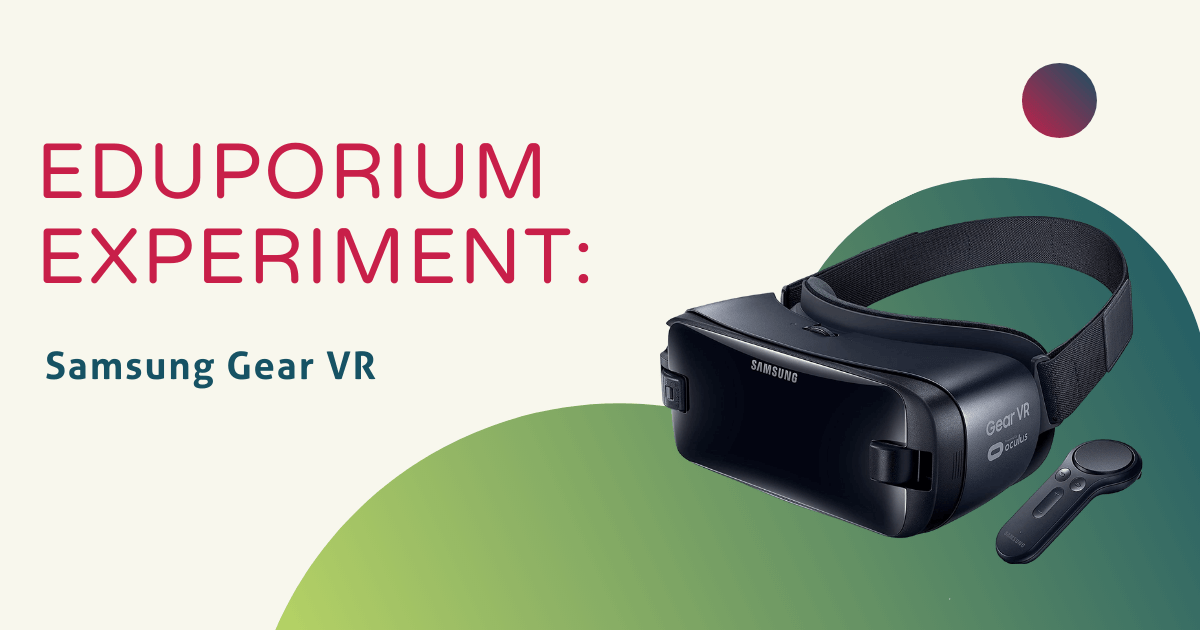As we continue to ramp up to our big VR event later this afternoon, we’re keeping the excitement high in the office by immersing ourselves in learning about this exciting and innovative technology. For this week’s Eduporium Experiment, I focused on the Samsung Gear VR, one of the best options if you are looking for an easily integrated, smartphone-powered VR experience.
The Samsung Gear VR is a portable VR headset that works in tandem with Samsung smartphones and Oculus technology (yes, of the famous Oculus Rift gaming headset). Compatible with several brands of Samsung Smartphones (most notably the Galaxy Note5), this headset brings a lot to the table without breaking the bank. I tried out its capabilities for myself from the comfort of my office and it was far from disappointing!
Getting started with VR, especially when using the Gear, is a very simple process. Unlike more robust and complex VR systems, it requires no wired connection to a computer. Simply open the Gear VR Oculus app, plug your Samsung phone into the handy micro USB port inside the viewer, and pop it on your head! With a few easy adjustments to the head straps and the focus wheel on top, I was plunged into an extremely immersive VR experience.
It’s been the case when I have worked with VR systems in the past that I’ve gotten extremely nauseous and haven’t really been able to enjoy myself, which was such a shame. I’m happy to say that this time around, for whatever reason (which may or may not be related to the Gear VR), I didn’t have that issue! I happily navigated my way through an educational app that took me on a virtual tour of two places I would love to visit in real life, but might never get the chance to see: Stonehenge (okay, yes, I could get there in person, but the app also took me back in time to watch the mysterious structure being built) and the International Space Station!
Both of these tours were voice guided and pretty engaging. Although I opted for the guided tour, which meant my experience was vaguely like watching a documentary, my view wasn’t locked and, at any time, I could look around at any part of the landscape I chose. Doing this in space was especially cool. Looking one way, I could see the entire Earth floating below me, but when I turned around? Nothing but empty space and stars. It was truly otherworldly! There was also an interactive “self-guided” tour I could have chosen to take as well, where I could have interacted with the objects I saw and moved myself around the world using the easy to access buttons on the side of the headset.
I had a lot of fun playing with the Gear. I think its educational value is immense, and, for the cost, it definitely earns a place in any 21st century classroom. So long as you don’t get motion sick, your experience is sure to be enjoyable (and if you do get motion sick and want to try it out anyway, try picking an experience that keeps your simulated body on the ground)!
If you have a STEM tool you’d like to see featured on the Eduporium Experiment, send us a message on Twitter or Facebook!



